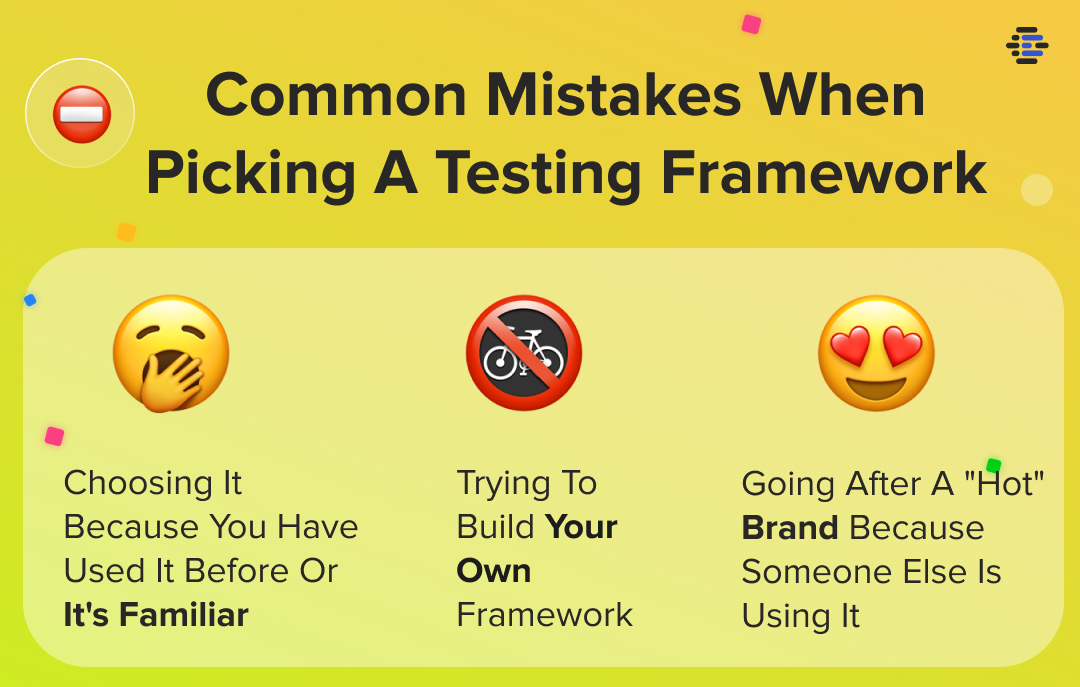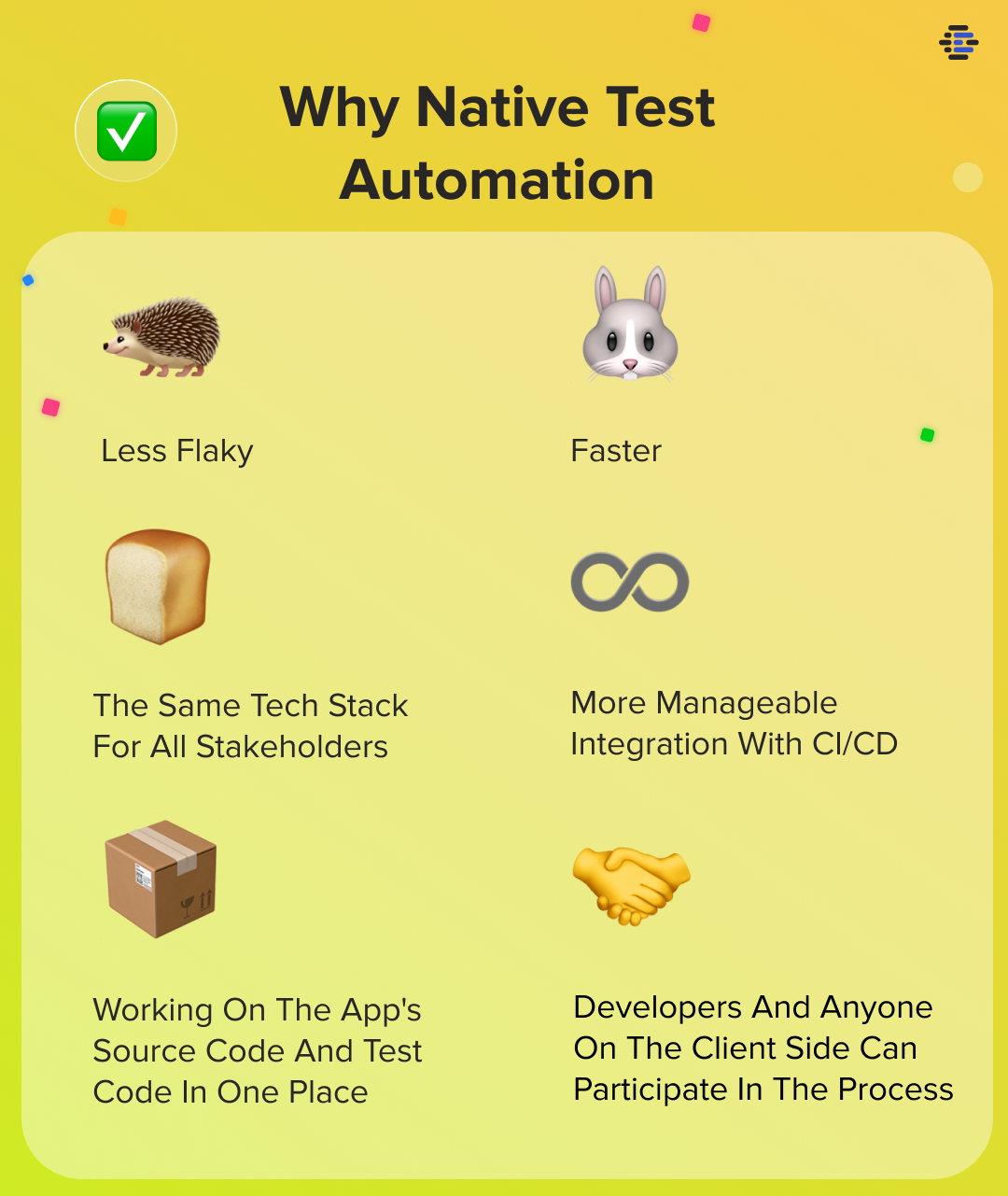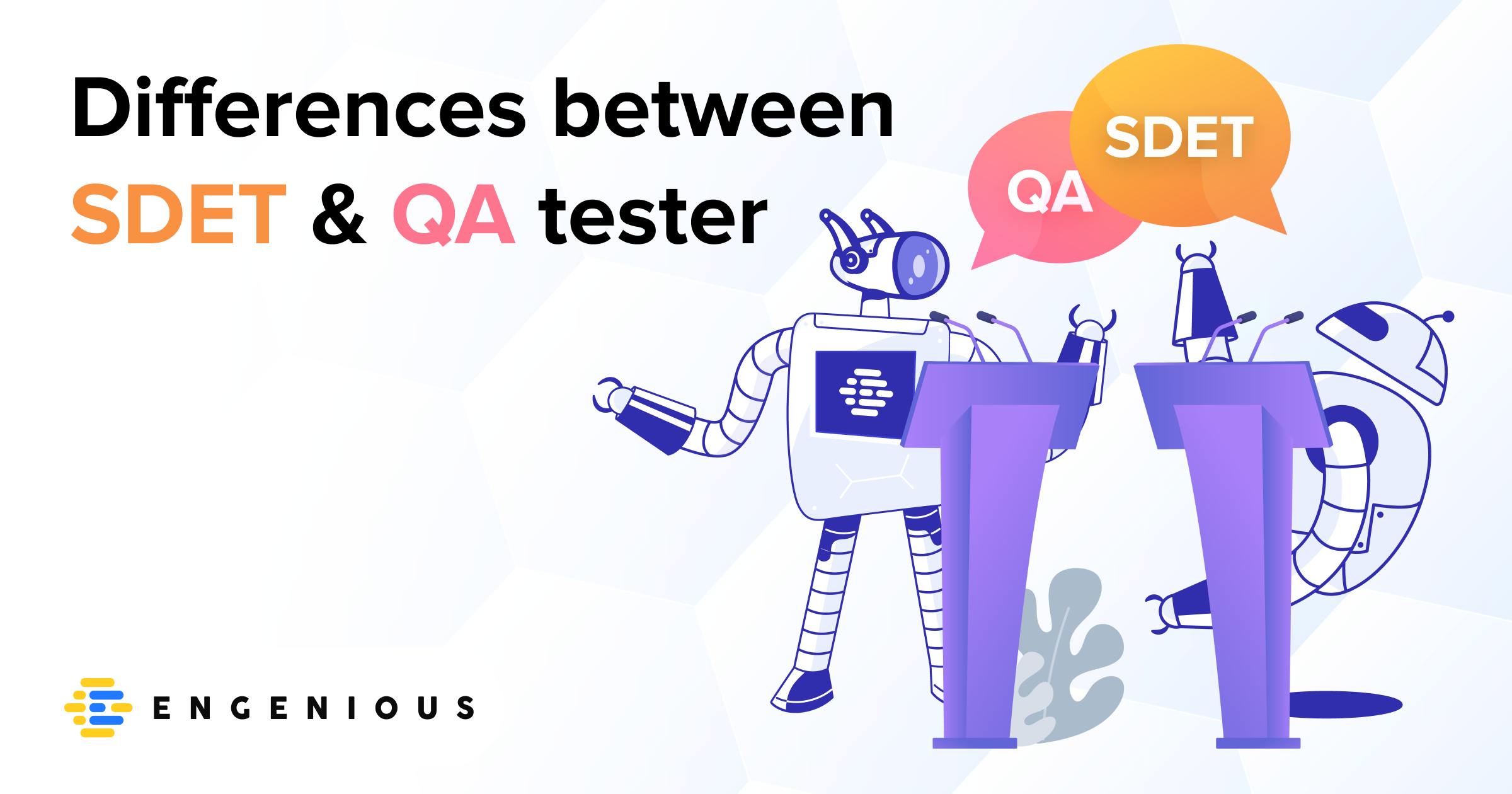Why Native Test Automation. Benefits and Drawbacks
Choosing an automated testing framework is essential to any organization’s automated testing strategy. While there are many solutions on the market, choosing the right one can help you save time and money. Selecting the correct framework reduces the number of manual tests that need to be performed and increases code coverage. To help you make this decision, we’ve created a small guide.
What Test Automation Frameworks exist?
Mobile platforms such as iOS and Android offer developers tools for mobile UI test automation (as well as unit tests). Espresso is the native tool for Android; for iOS, it’s XCUITest. You can also choose an open-source third-party solution like Appium. It is becoming standard in the QA industry due to its popularity.

When choosing a new framework, you should consider your future needs and the type of application you are developing. The framework should also meet your usability, speed, parallel testing, and hosting requirements. It should also integrate well with your CI/CD pipeline and support the technology and environment you are using.
Depending on your team’s needs, you must also consider several additional factors. Teams mainly consisting of developers embracing shift-left motion, agile development, and continuous integration tend to prefer frameworks that facilitate fast test automation.
In contrast, organizations with siloed QA and development teams following the more traditional waterfall approach may choose more straightforward frameworks.
Consider the costs of each framework and whether free trials allow you to evaluate each option before deciding which one is right for your organization. Consider whether your team has the required skill sets to work with the framework when choosing a framework. Also, consider how much time your team members will take to learn how to use the tool effectively.
Popular Tools
Appium
Appium is an open-source framework that allows for cross-platform mobile testing. It supports both iOS and Android platforms, and it was derived from Selenium in an effort to extend automated testing functionality to mobile apps.
Based on many resources, Appium is the QA community’s favorite tool for mobile test automation. There are several reasons why this is so. Firstly, Appium is the indirect follower of Selenium — Appium’s older brother — and both tools rely on the WebDriver API. Today, Selenium is one of the most popular tools for web test automation. It’s not surprising that many QA analysts found Appium attractive when mobile test automation became more widespread.
The second reason is that Appium allows you to write test cases for both Android and iOS in one program. You can run the same tests on both platforms, saving you time rather than writing separate tests for each platform. But the reality of test-writing is that you often have to write up alternate scenarios for each platform to accommodate different user experience requirements. So whether you save time using Appium depends on your organization’s specific needs.
Limitations: To effectively use Appium for native app testing, users must be familiar with a new scripting language and learn the rules on how to interrogate their application best. To achieve optimal results, users also need to understand the concepts of native apps and selectors and Appium’s architecture.
Nevertheless, because of its large community and the number of learning materials available, Appium is a robust tool for automation developers. It makes it easier for QA analysts to solve many issues before and during test automation in the earlier and advanced phases.
Frameworks for Native Testing
Although Appium is a popular option for mobile testing, some companies have found that native mobile testing is a better choice. Native mobile testing allows QA analysts to work with developers using the same tech stack and language. It also makes integrating with Continuous Integration/Continuous Delivery (CI/CD) systems more manageable.
XCUITest
XCUITest is a testing framework that ships with Apple’s XCode development system. It is the most popular framework for developers who want to test their iOS apps. The framework offers comprehensive functionality to do basic unit-level testing of iOS apps. XCUITest’s architecture simplifies the testing process by allowing teams to work on the app’s source code and test code in one place. Overall, XCUITest is simpler to work with, intuitive to set up, and easy to maintain compared to a framework like Appium.
There are some limitations to be aware of. XCUITest is designed for testing iOS apps, so it can only be used to test Objective-C and Swift code run on iOS devices. This makes XCUITest popular with iOS developers. However, QA teams tend to move away from the platform lock-in of XCUITest and instead opt for more OS-agnostic frameworks such as Appium. The scope of testing with XCUITest is also limited to the application. In contrast, with Appium, users can test the complete flow and interaction between apps, browsers, and OS.
Whatch this webinar to find out how Apple and Grammarly overcome Xcode limitations in testing:
ESPRESSO
Espresso is the testing framework that comes built into Android Studio. It is explicitly designed for functional testing of Android applications. Espresso offers several benefits, including simplicity, convenience, and speed. It allows developers to test code components quickly and easily, with automatic synchronization of UI. It also brings faster feedback for developers, as it does not require a server for communication. The simplicity and convenience of this framework also stem from the fact that one can compile Android UI tests into a separate APK.
Espresso also has its limitations. It is only compatible with Java and Kotlin, meaning that your tests can only be written in these languages. Additionally, it can only be used to test Android apps. So, if your team is developing an app that will be listed on both iOS and Android, you will need to find another framework to help ensure compatibility across these different operating systems.
Why Native Test Automation
Running tests in native tools like XCUITest and Espresso is much faster than running Appium tests. Tests written for native tools tend to be less flaky because Appium is running on XCUITest and Espresso frameworks under the hood. And the extra layer of code — meant to allow you to run one test on both platforms — is slowing down the test execution and sometimes making tests fail for no obvious reason.
While it is possible to use a variety of languages with Appium, such as Ruby, Python, JavaScript, PHP or C#, it is best if QA analysts and developers use the same language. In agile teams, the cooperation between QA and developers can be made easier if they share the same technologies. For this reason, Swift’s and Kotlin’s support of Espresso and XCUITest is a significant advantage.
Can you imagine an iOS developer helping a QA analyst fix a bug in his Java or Python tests? It would contradict with Agile methodology for a QA analyst to work with different technologies than developers.
More about Android Native Automation services:
Should You Use Native Frameworks for Test Automation?
You should use native frameworks for test automation if time spent on testing concerns you and your team. While manual testing can be highly effective on smaller projects, large-scale projects often require efficient automated tests. One of the benefits of automated tests in XCUITest and Espresso is that every stakeholder can run them. Developers, product owners, and anyone on the client side can participate in the process. This allows everyone to have a real-time idea of the current application state.
There is no right or wrong answer when selecting an automation framework. While there are teams that choose to use one framework, there are many teams that will combine two or more. So whether you should use Espresso, XCUITest, and/or Appium depends on your project’s requirements. Make sure to understand what your project requires before making a decision.

At Agilistry, we are all about test automation. We are a leading mobile application testing company that offers software testing services to customers. Our team of experienced testers is capable of handling complex and mission-critical projects with ease. Order our mobile software testing services today so you won’t have to worry about the quality of your product tomorrow.


